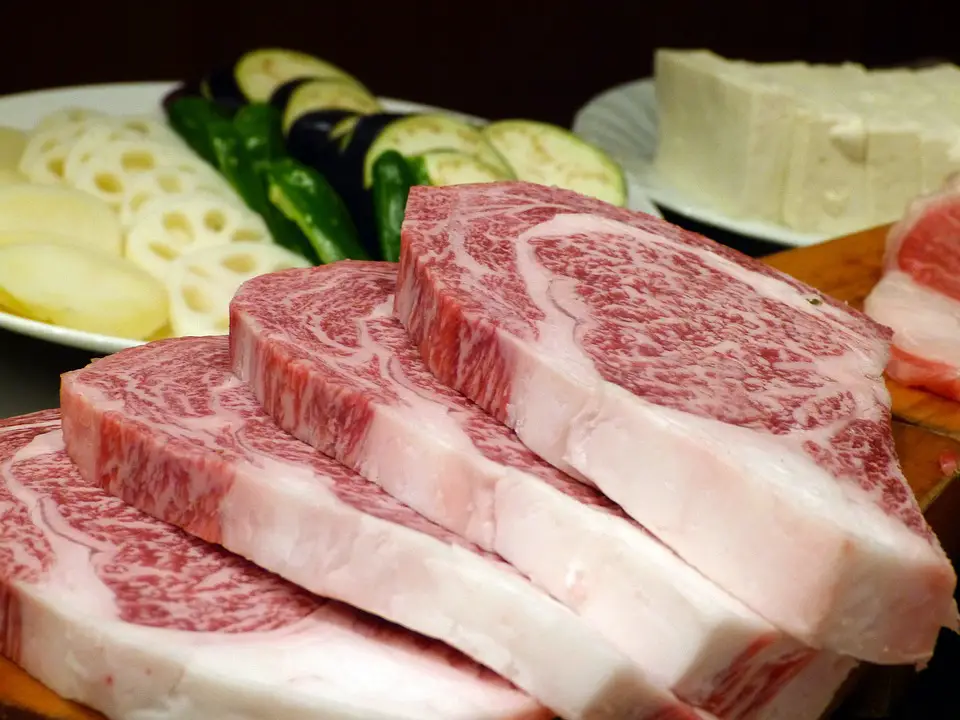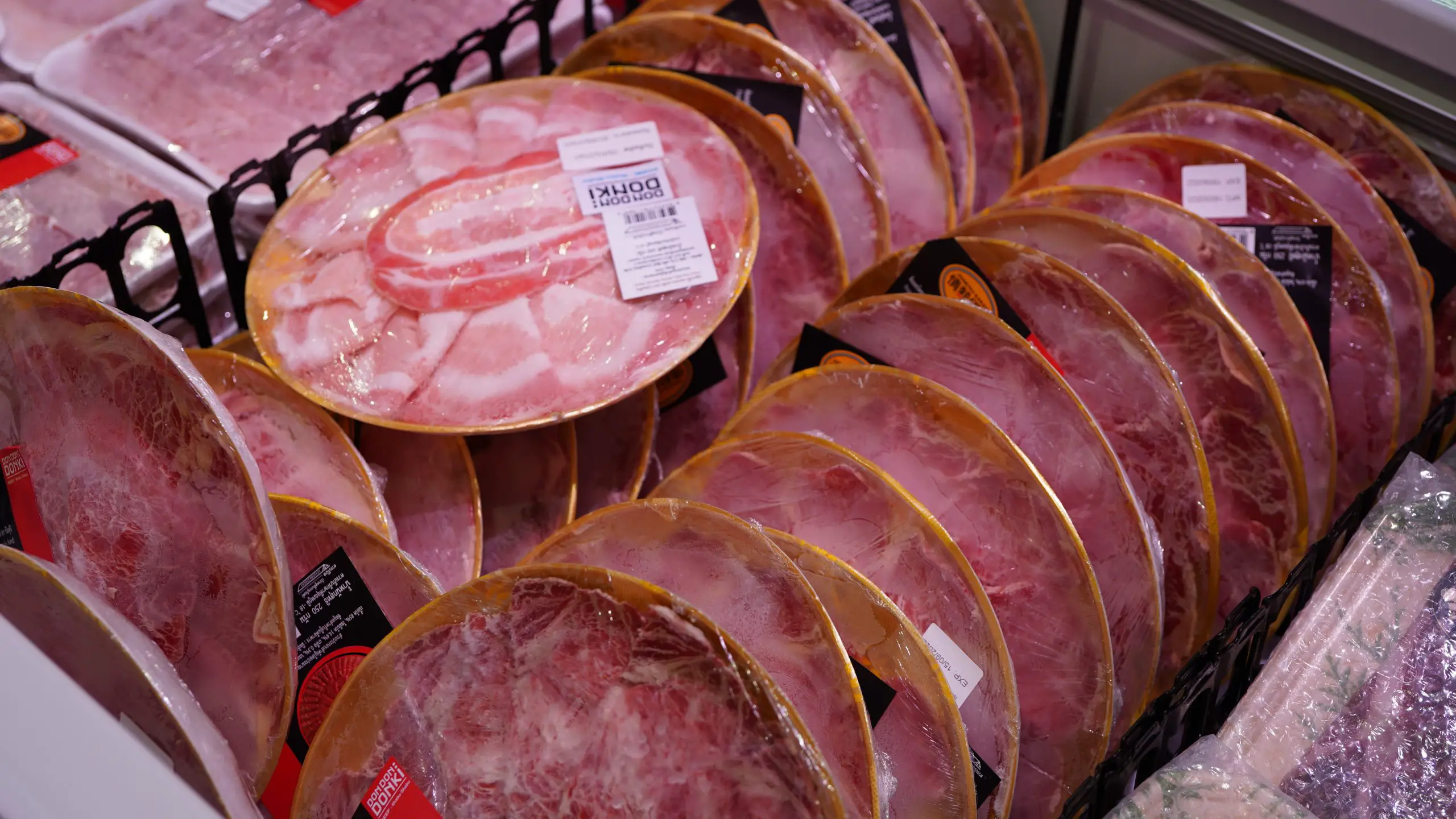Whether you are cooking or eating meat, you may wonder how long after use or freeze-by-date meat is good. Some people have concerns about how long to eat chicken and other types of meat after their sell-by date.
Expired foods are a big problem for many people. Some stores sell out of the stuff, while others donate it to charities. Other stores throw it away. However, there are ways to keep meat fresh for a while. One is to freeze it. This can help preserve the quality of the meat while reducing the bacterial risk.

How Long After Use or Freeze by Date is Meat Good?
The meanings of “sell-by,” “best if used by,” and “use-by” are comparable yet significantly different. Except for infant formula, none are intended to constitute food safety dates but rather to reflect quality.
When a product has a “Sell-by” date, it is intended more for retailers to know when to cycle it off the shelves.
A “Best if used by” date is a sign of excellence (the food will not be “bad” after that date).
According to quality, not safety, a “Use-by” date indicates the last day the manufacturer suggests utilizing the product.
That depends on what it is and how it was handled. The USDA advises consuming the products by that date if they have a use-by date. Depending on the food, sell-by dates passed at home can still be kept for a short period. Ground meat and poultry are a couple of typical goods (1 to 2 days past the date).
Use your nose if food safety is a concern for you. If you purchased raw chicken and know it has been sitting in the refrigerator for two days past its best-by date, smell it. You’ll instantly know if it’s bad. To keep track of expiration dates, store products in their original packaging. Alternatively, ensure your labeling system is effective so that you may cook chicken or other foods at their freshest.
How to Store Meat for Longer Duration?
Refrigeration
Fresh meat should be kept between 28°F and 32°F for the best storage results. Meat should be kept in the refrigerator’s coldest section. Perishability rises as storage temperatures approach 40°F. Bacteria start to multiply quickly at about 50°F. The growth of rotting germs is encouraged when meat is in transit from the point of purchase or is allowed to thaw at room temperature. For best quality preservation, meat should be frozen as soon as possible if it won’t be consumed within a few days after purchase.
Freezing
The most popular method for keeping meat fresh is freezing. To save freezer space, trim any excess fat and, if feasible, remove any bones. Salted meat shouldn’t be frozen first. Meat that has been salted can be frozen for a shorter period because salting removes moisture and oxidizes meat fat, giving it a rancid flavor.
How to Freeze Meat?
The freezer is the greatest place to keep meat fresh, whether you’re storing chicken breasts, ground meat patties, or hot dogs. Frozen beef is simple if home cooks adhere to certain fundamental food safety and storage recommendations.
Examine the meat’s grade. How long it will last depends partly on the quality of the meat you purchase at the supermarket. The best cuts available are USDA prime and select cuts. Raw meat can generally be kept in the freezer for up to a year without losing quality. Other types of meat, such as ground beef, bacon, and sausage, only keep their freshness for two months.
Meat kept at room temperature excessively long runs the danger of going bad. Furthermore, preserving meat will soon stop ice crystals from developing. To avoid ice crystal formation, rapidly freeze the meat. Raw meat should be frozen within a day or two of purchase if you don’t intend to consume it immediately. To keep food as fresh as possible, keep the freezer at 0 degrees Fahrenheit.
Divide the meat into halves. To make it simpler to thaw and serve later, divide your meat into serving-sized parts.
Carefully wrap the meat. To keep your meat fresh, limiting air exposure is essential. Although a vacuum sealer is preferred for storing meat, you can also use freezer paper and a freezer bag if one is not accessible. Plastic wrap, parchment paper, or aluminum foil are used to double-wrap the meat.
Put the meat in plastic bags and close them firmly. Make sure the zip-top bags you use are sealed. While preserving the freshness of the various types of meat, firmly sealing the bags helps prevent freezer burn.
Label the storage containers you use. Put the meat’s cut and the purchase date on your plastic containers’ labels. Doing this will guarantee that you use the meat within the required timeframe.
How do you Defrost Frozen Meat?
None of the three safe methods for defrosting frozen meat and poultry entail leaving the food on the counter to warm up. (Want to use up more of your frozen meals? These Freezer Slow Cooker Meals Will Save Your Weeknights.)
Defrost the Refrigerator
The refrigerator is the greatest place to defrost meat and poultry, but it does take some preparation. Plan one day of defrosting for every 5 pounds of weight for large roasts and whole turkeys. Larger things need a day or two to thaw, while smaller cuts can do so overnight.
Beef and pork can be refrozen or kept in the refrigerator for three to five days after defrosting. Although it can also be refrozen, chicken can only be kept in the refrigerator for up to two days after it has been defrosted before being cooked or refrozen.
Defrost Under Running Water
If you’re not one for planning ahead but still want to hasten the thawing process, place meat or poultry in a leak-proof plastic bag and submerge it in cold water. Ensure the water is changed every 30 minutes to maintain the coldness of the meat or poultry—plan to cook the meat once it has defrosted rather than storing it in the fridge.
Is Expired Food Still Nutritious?
According to the meal. Orange juice is a good illustration. An entire day’s worth of vitamin C can be found in one cup of orange juice. However, after exposure to air and light for a week, it loses its antioxidant effects. (It might occur even earlier than the item’s expiration date.)
Some foods lose nutrients when exposed to oxygen in the air, and cooking your meal may cause it to lose even more nutrients. Eat your fresh produce as soon as possible after buying it, but don’t worry too much about nutrient loss.
Is it Safe to Eat Food After it Expires?
Dates of expiration relate to quality rather than safety. For instance, if a chilled product was handled and packaged properly, kept below 40 degrees, and stayed cool, it might have an off-putting appearance and smell but wouldn’t necessarily be dangerous. It would not be safe to eat if it had been exposed to hazardous bacteria for an extended period at room temperature or had been contaminated by something else.
Perishable foods should never be left to defrost on the counter for more than two hours because. However, the center may stay frozen. The outside surface may reach the Danger Zone, the temperature range between 40°F and 140°F, where bacteria proliferate quickly. For the same reason, you shouldn’t consume any meat, poultry, eggs, or freshly cut fruit or vegetable that has been exposed to the air for longer than 2 hours (1 hour in temperatures above 90°F). However, this is independent of the item’s expiration date and might happen to any product.
What will happen if you Eat Expired Meat?
Our bodies are designed to protect us from eating rotten meat. A terrible piece of meat’s sight and aroma is usually enough to make most people sick. It makes sense to avoid consuming items like expired beef, poultry, hog, or lamb. The New Survivalist claims that properly stored meat may last longer than you think. Some types of canned meat can last up to 10 years if maintained properly, even though the date on the can may only be a year or two from the date you bought it.
The shelf life of your canned meat will be extended by salt and other preservatives, but sugar and acidic sauces will have the reverse effect. Things like SPAM have an incredibly long shelf life for reasons other than the canning process itself. The food’s high salt content also does a lot to help preserve it. The presence of additional preservatives like nitrates may also extend the meat’s shelf life.
A tin of beef ravioli in a sweet tomato sauce will spoil far sooner than a can of corned beef, which may last for a decade. Therefore, consuming an old can that is in good shape and contains some salted meat won’t damage you. However, you shouldn’t take the risk if the can is swollen, punctured, or rusted.
Reference: Effects of heat on meat proteins – Implications on structure and quality of meat products
Discussion is had over how various beef proteins react to heating. However, some sarcoplasmic proteins can gel up to 90 °C, most aggregating between 40 and 60 °C. Protein-protein association occurs for myofibrillar proteins in solution at 36–40 °C, followed by gelation at 45–50 °C (conc. > 0.5% by weight). Unfolding begins at 30-32 °C. Collagen denaturation occurs between 53 and 63 °C, followed by collagen fiber shrinkage. Collagen melts and turns into gelatine when heated further if heat-resistant intermolecular linkages do not protect the collagen fibers.
Conclusion
There may be a date printed, stamped, or written on the package of meat that you buy from a store. This data may indicate a variety of things, but it is likely there to let you know when the item you purchased will “expire.” That label is not for you if your product includes a “sell by” date, which the USDA states is typically found on items like meat. It’s there to inform the shop’s staff when that item has to be sold.
Although some expired foods are donated to food pantries, most items that have passed their sell-by dates are generally thrown away. Additionally, “best before” dates are listed, which specify when a food’s texture and flavor will be of high quality.

